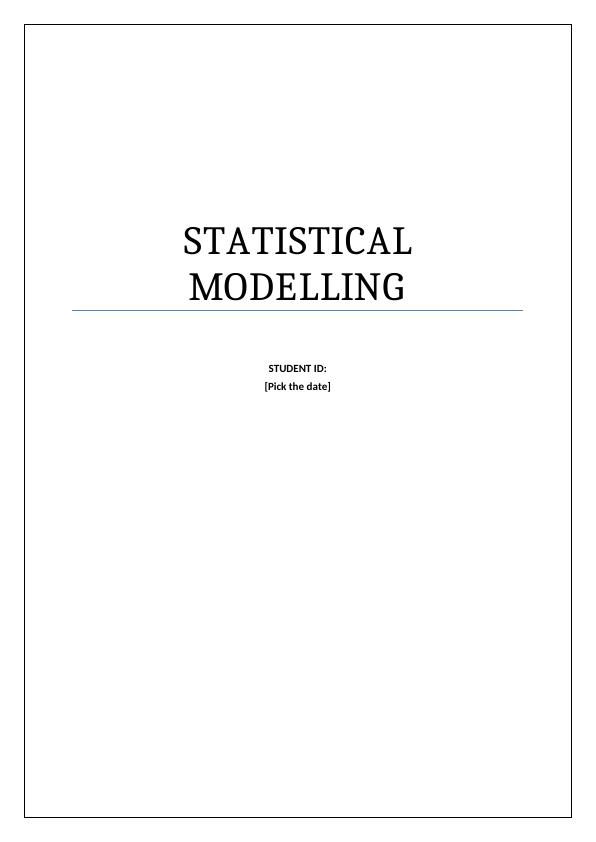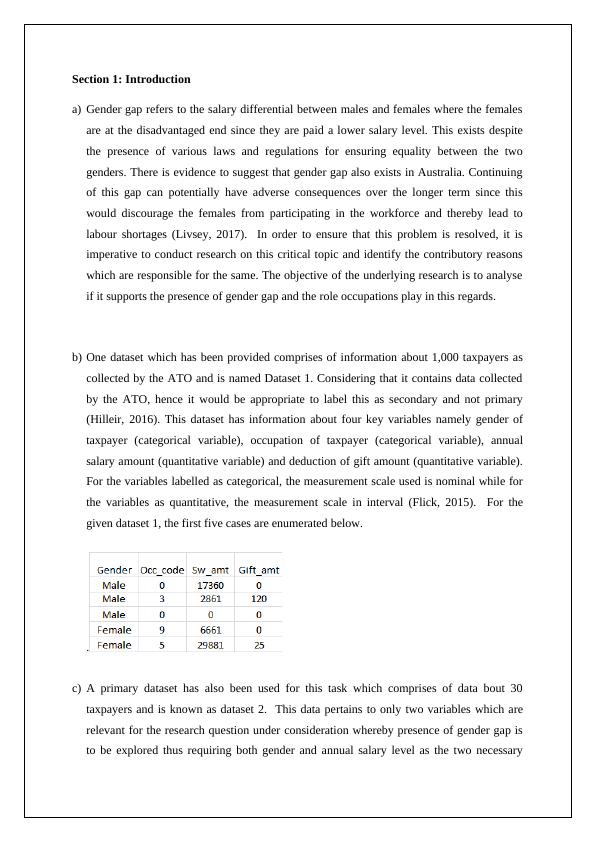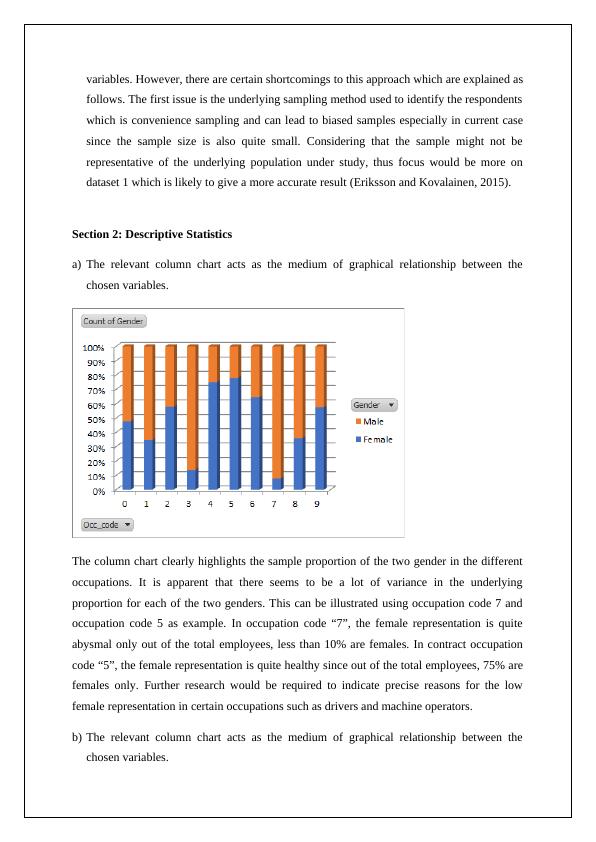Statistical Modelling - Assignment
Added on 2021-06-16
11 Pages2197 Words61 Views
STATISTICALMODELLINGSTUDENT ID:[Pick the date]

Section 1: Introductiona)Gender gap refers to the salary differential between males and females where the femalesare at the disadvantaged end since they are paid a lower salary level. This exists despitethe presence of various laws and regulations for ensuring equality between the twogenders. There is evidence to suggest that gender gap also exists in Australia. Continuingof this gap can potentially have adverse consequences over the longer term since thiswould discourage the females from participating in the workforce and thereby lead tolabour shortages (Livsey, 2017). In order to ensure that this problem is resolved, it isimperative to conduct research on this critical topic and identify the contributory reasonswhich are responsible for the same. The objective of the underlying research is to analyseif it supports the presence of gender gap and the role occupations play in this regards.b)One dataset which has been provided comprises of information about 1,000 taxpayers ascollected by the ATO and is named Dataset 1. Considering that it contains data collectedby the ATO, hence it would be appropriate to label this as secondary and not primary(Hilleir, 2016). This dataset has information about four key variables namely gender oftaxpayer (categorical variable), occupation of taxpayer (categorical variable), annualsalary amount (quantitative variable) and deduction of gift amount (quantitative variable).For the variables labelled as categorical, the measurement scale used is nominal while forthe variables as quantitative, the measurement scale in interval (Flick, 2015). For thegiven dataset 1, the first five cases are enumerated below..c)A primary dataset has also been used for this task which comprises of data bout 30taxpayers and is known as dataset 2. This data pertains to only two variables which arerelevant for the research question under consideration whereby presence of gender gap isto be explored thus requiring both gender and annual salary level as the two necessary

variables. However, there are certain shortcomings to this approach which are explained asfollows. The first issue is the underlying sampling method used to identify the respondentswhich is convenience sampling and can lead to biased samples especially in current casesince the sample size is also quite small. Considering that the sample might not berepresentative of the underlying population under study, thus focus would be more ondataset 1 which is likely to give a more accurate result (Eriksson and Kovalainen, 2015).Section 2: Descriptive Statistics a)The relevant column chart acts as the medium of graphical relationship between thechosen variables.The column chart clearly highlights the sample proportion of the two gender in the differentoccupations. It is apparent that there seems to be a lot of variance in the underlyingproportion for each of the two genders. This can be illustrated using occupation code 7 andoccupation code 5 as example. In occupation code “7”, the female representation is quiteabysmal only out of the total employees, less than 10% are females. In contract occupationcode “5”, the female representation is quite healthy since out of the total employees, 75% arefemales only. Further research would be required to indicate precise reasons for the lowfemale representation in certain occupations such as drivers and machine operators.b)The relevant column chart acts as the medium of graphical relationship between thechosen variables.

For income levels between $0- $35,000, females tend to have a higher representation asevident from the column chart shown above. However, this pattern starts altering as theincome levels undergo an increase. For instance, between $ 35,000 and $ 70,000, therepresentation of the two genders is almost the same with no significant difference. As thesalary levels rise to more than $ 70,000, a clear majority of the males is apparent sincefemales as a percentage of total employees assume less than 25% which tend to fall further asincome levels are further enhanced. Thus, the graph above clearly highlights the premise ofgender gap being existent. c)The relevant table acts as the medium of numerical relationship between the chosenvariables.

End of preview
Want to access all the pages? Upload your documents or become a member.
Related Documents
Statistical Modelling - Assignment PDFlg...
|11
|2022
|43
Introduction - Statistical Modelinglg...
|12
|2173
|100
Gender Pay Gap in Australia: Statistical Modellinglg...
|11
|2190
|404
Statistical Modelling Assignment PDFlg...
|12
|2377
|37
Gender Gap in Workforce Managementlg...
|10
|1500
|438
(PDF) An introduction to statistical modellinglg...
|12
|2406
|48
